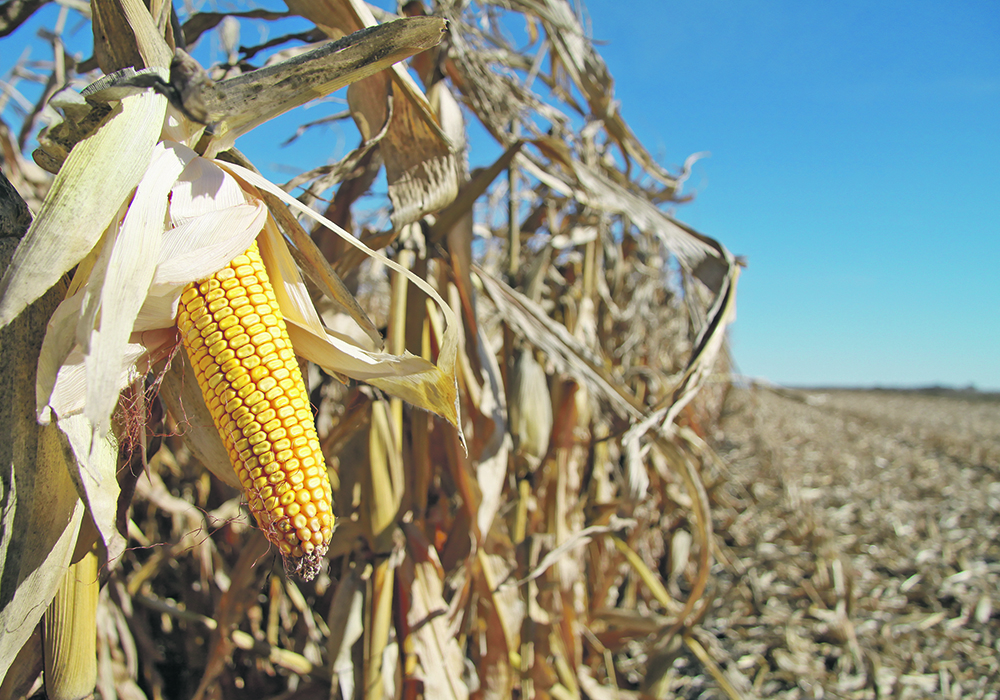
Commodities - Corn, Soybeans, and Wheat - Forecast and Trends
Analyzing market trends, production forecasts, and trade dynamics.
The corn, soybean, and wheat markets have been subject to a range of factors that have influenced their recent performance. In the corn market, the failure to break through the 100-day moving average and the subsequent bearish reversal have raised concerns among traders. The recent rains in the Midwest have provided some relief to parched soils, but the market is still under pressure from Brazil's anticipated bumper corn crop. With Brazil poised to become the largest global exporter of corn, the dynamics of the corn market are undergoing a significant shift. Meanwhile, in the soybean market, the preservation of yield potential following showers in the Upper Midwest has led to some profit-taking, coupled with lower European Union soybean imports. These developments have added bearish pressure to the market. Lastly, the wheat market has witnessed mixed performance, with recent rains stabilizing drought-affected crops but uncertainties looming over the fate of the Black Sea grain deal. These factors, along with weather forecasts and monetary policy decisions, will continue to shape the outlook for these agricultural markets.
Corn Market Analysis: The corn market experienced a bearish reversal as July corn futures failed to surpass the 100-day moving average for the second consecutive day. This led to a downward trend, pushing prices towards the $6.00 handle and the 50-day moving average at $6.01 1/2. While intraday opportunities exist, the overall bias remains neutral, offering both bullish and bearish prospects. The recent rains in the Midwest and Brazil's anticipation of a record-breaking corn crop have impacted market sentiment. Brazil's potential to overtake the United States as the largest global exporter of corn poses an interesting shift in the supply and demand dynamics.
Soybean Market Analysis: Soybean prices witnessed a decline after the Upper Midwest received showers, which preserved the yield potential for the 2023 U.S. soybean crop. Some profit-taking was observed, along with reduced European Union soybean imports, contributing to the downward pressure. The EU, being the world's second-largest soybean importer after China, has experienced a decline in imports due to increased canola production within the bloc. Additionally, the U.S. Environmental Protection Agency (EPA) postponed its biofuel blending volume mandates announcement, allowing for further assessment of the ethanol and biofuels industry. This delay provides an opportunity to evaluate the impact of blending estimates on the soybean market, particularly with the anticipated renewable diesel expansion.
Wheat Market Analysis: The wheat market faced a decline as recent rains provided some relief to drought-affected crops in the Western Plains and the Heartland. Kansas City futures suffered the most significant losses, while Minneapolis and Chicago futures were also affected. The fate of the Black Sea grain deal after its expiration on July 17 has added uncertainty to the market. Furthermore, President Vladimir Putin's remarks about Russia considering withdrawing from the deal have raised concerns and influenced wheat market dynamics. These developments highlight the need to closely monitor the situation and its potential impact on wheat prices.
Weather Forecast and Potential Implications: Looking ahead, weather forecasts play a crucial role in shaping market sentiment. While recent showers have provided some relief to dry fields in the Corn Belt, rising temperatures in the extended forecast pose challenges. If soil moisture levels are not adequately replenished, the heat waves expected in the Plains and Midwest could exert additional stress on crops, potentially leading to moderate price increases in the futures markets. Monitoring weather patterns and their impact on yield potential will be crucial for traders and investors.
Financial Considerations: In the financial sector, the release of the May 2023 Consumer Price Index (CPI) data revealed consumer prices running 4% higher compared to the same period last year. Although this figure is lower than the previous month's reading, it indicates the persistence of inflationary pressures. The Federal Reserve, which targets a 2% inflation rate, may need to carefully evaluate the data and make appropriate monetary policy decisions. The outcome of the Federal Open Market Committee (FOMC) meeting will be closely watched for insights into the Fed's stance on interest rates and its potential implications for the market.
As we delve deeper into the analysis of the corn, soybean, and wheat markets, it is important to consider the various factors at play that can influence their trajectories. While the corn market experienced a bearish reversal and faced resistance against the 100-day moving average, it is crucial to note that intraday opportunities exist on both the bullish and bearish sides. The recent rains in the Midwest and Brazil's anticipation of a record-breaking corn crop have added complexity to the market dynamics. With Brazil poised to overtake the United States as the largest global exporter of corn, the supply and demand dynamics are undergoing a significant shift.
Turning our attention to the soybean market, we observe a decline in prices following showers in the Upper Midwest that preserved the yield potential for the 2023 U.S. soybean crop. This relief led to some profit-taking in the market. Additionally, European Union soybean imports are trending lower, which adds further bearish pressure. The EU, being the world's second-largest soybean importer after China, has experienced a decline in imports due to increased canola production within the bloc. The postponement of the EPA's biofuel blending volume mandates announcement provides an opportunity to assess the impact on the soybean market, particularly with the anticipated expansion of renewable diesel. These factors highlight the need for careful monitoring of supply and demand dynamics, as well as policy developments in the biofuels sector.
In the wheat market, recent rains have provided some relief to drought-affected crops in the Western Plains and the Heartland. This stabilization has impacted Kansas City, Chicago, and Minneapolis futures differently. However, the fate of the Black Sea grain deal after its expiration on July 17 adds an additional layer of uncertainty to the market. President Vladimir Putin's remarks about Russia considering withdrawing from the deal have raised concerns among market participants. The implications of this decision and its potential impact on wheat prices need to be closely monitored.
While analyzing these agricultural markets, it is essential to consider the weather forecast and its potential implications. The recent showers have provided some relief to dry fields in the Corn Belt, but rising temperatures in the extended forecast pose challenges. If soil moisture levels are not adequately replenished, the subsequent heat waves expected in the Plains and Midwest could exert additional stress on crops. This could potentially lead to moderate price increases in the futures markets. Therefore, monitoring weather patterns and their impact on yield potential will be crucial for traders and investors looking to make informed decisions.
In the financial sector, the release of the May 2023 Consumer Price Index (CPI) data revealed that consumer prices are running 4% higher compared to the same period last year. While this figure is lower than the previous month's reading, it still indicates the persistence of inflationary pressures. The Federal Reserve, with its target of a 2% inflation rate, will carefully evaluate the data and make appropriate monetary policy decisions. The outcome of the Federal Open Market Committee (FOMC) meeting will be closely watched for insights into the Fed's stance on interest rates and its potential implications for the market.
Read More
-
GPIX ETF 8% Monthly Yield and S&P 500 Upside at $53
13.01.2026 · TradingNEWS ArchiveStocks
-
XRP ETFs XRPI, XRPR and Bitwise XRP Pull In $1.5B as XRP-USD Stalls Around $2.13
13.01.2026 · TradingNEWS ArchiveCrypto
-
Natural Gas Price Forecast: NG=F Climbs Off $3.00 Floor as Cold Snap and LNG Flows Lift UNG
13.01.2026 · TradingNEWS ArchiveCommodities
-
USD/JPY Price Forecast - USDJPY=X Charges Toward ¥159 as Japan Election Fears Hit the Yen
13.01.2026 · TradingNEWS ArchiveForex



















